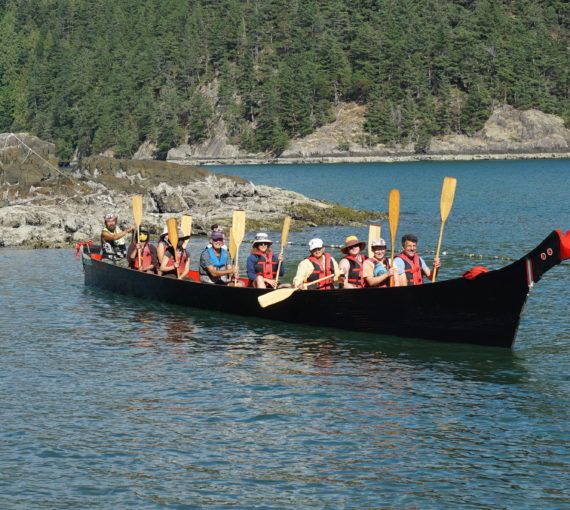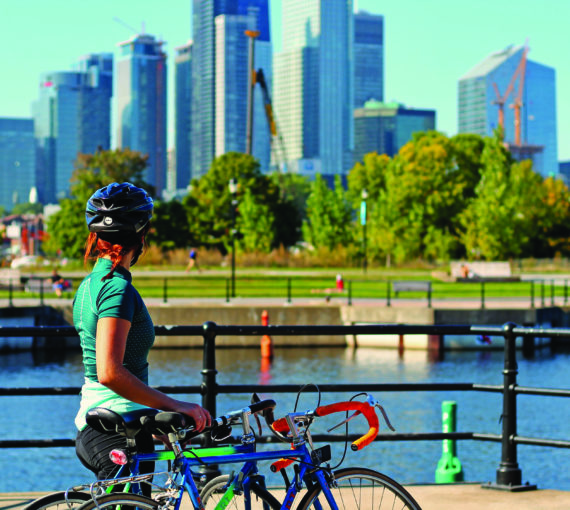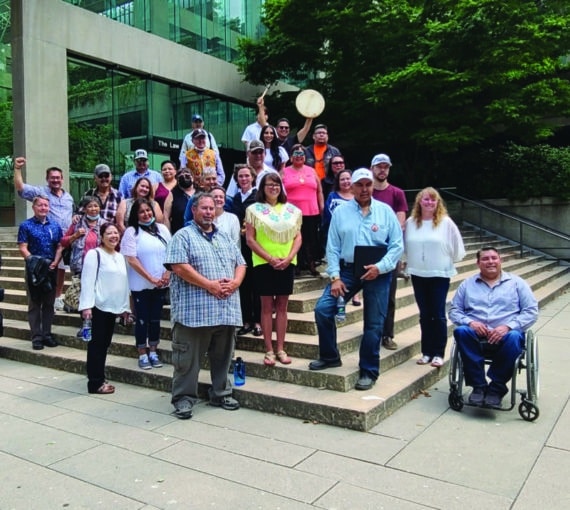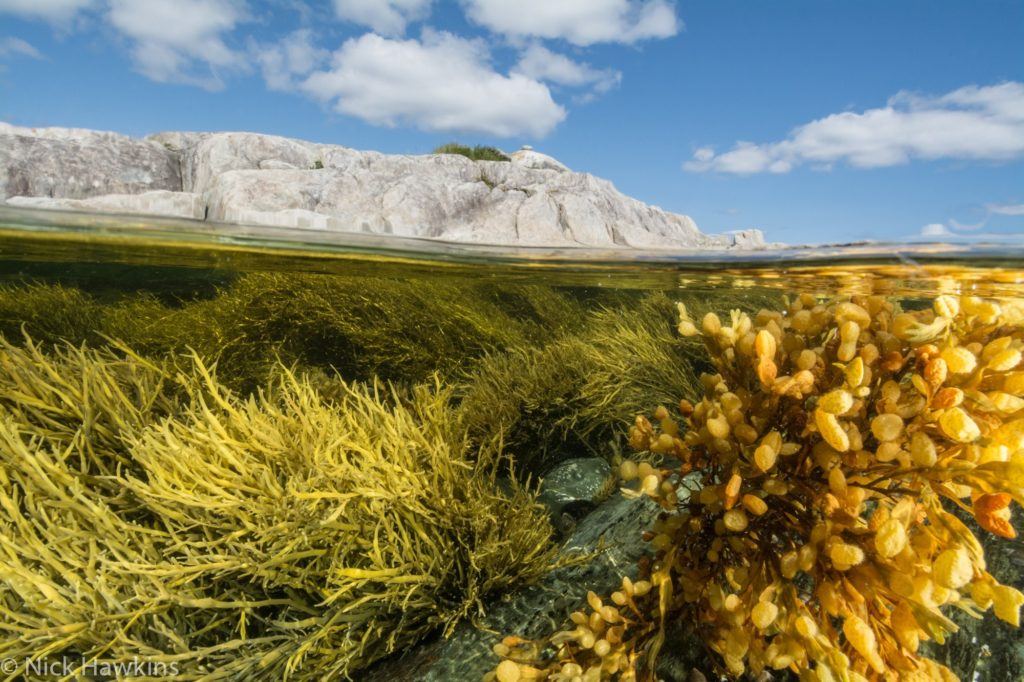
View of colorful seaweeds and rich intertidal zone around Borgle's Island, Nova Scotia, Canada, September 2015. (Photo: Nick Hawkins)
Canada has three coasts — the Arctic, Atlantic and Pacific — that border on Earth’s one, interconnected ocean, and the longest coastline of any nation. Here are some of the ways we’re working to fulfil this country’s responsibility to the world to take care of this rich marine heritage.
In 2015, Canada had protected about one per cent of its ocean. Our supporters and allies and leadership from Indigenous nations helped push that number to 13.8 per cent by the end of 2020. That exceeded Canada’s international commitment of 10 per cent under the United Nations Convention on Biological Diversity.
Quebec hits targets
In December 2020, Quebec reached its goal of 10 per cent marine protected areas.
This came after a tidal wave of public support inspired by our videos, postcards, petitions, emails, and sailing and diving trips.
In December 2020, oil exploration company Corridor Resources finally dropped its proposal to drill the Old Harry well site in the Gulf of St. Lawrence off the coast of Newfoundland and Labrador.
We fought this project since 2008, along with scientists, Indigenous leaders and members of coastal communities.
It was a long battle. In 2010, seismic blasting — which makes life difficult for species that use sound to navigate — was permitted while endangered blue whales were migrating in the area. Despite our protests, the licence to drill was extended in 2017.
Now these fights are won!
In April 2022, Quebec became the first jurisdiction on Earth to ban fossil fuel development in its territory — including offshore areas.
These are victories for threatened fish and beluga whales, endangered North Atlantic right whales, sea turtles and other life in the Gulf of St. Lawrence and the St. Lawrence River estuary, as well as Indigenous communities, fisheries and tourism industries.
Protecting wild salmon from salmon farms in British Columbia
During their miraculous but perilous journey from inland spawning grounds, down rivers, out to sea and back again years later, Pacific wild salmon often must run a gauntlet of open-net salmon farms on their coastal migration route.
There they swim through waters that can harbour parasitic sea lice and harmful viruses and bacteria, made worse and spread by the farms.
Thanks to pressure from Indigenous leaders, community activists, scientists, elected officials and our supporters, in December 2020, the federal government decided to phase out salmon farms in the Discovery Islands off the coast of B.C. within 18 months.
This was an important first step toward Canada’s commitment to move open net-pens out of B.C.’s coastal waters by 2025 and give juvenile fish migrating past the Discovery Islands a better chance of survival. In June 2022, the federal government signalled intent to meet their commitment, but we have to keep the pressure on to ensure change is made.
Decades of research show that the 19 Discovery Islands fish farms — located on one of the most important salmon migration routes in the world — pose a risk to wild salmon. The aquaculture industry’s own data show 33 per cent of farms exceeded the federal government’s sea lice limit while juvenile salmon were migrating past the Discovery Islands in spring 2020.
Those working to protect wild salmon from the risk of diseases, viruses and parasites from open-net fish farms celebrated the decision. But fish farm companies in the region are fighting the ministerial decision in court. With our allies, we’re acting as interveners in the judicial review.
In the meantime, speak up for wild salmon and stay tuned!
All life on Earth depends on healthy oceans. They absorb one-quarter of the carbon humans put into the atmosphere annually. They produce more than 70 per cent of Earth’s oxygen and contain 99 per cent of its living organisms.
Átl’ka7tsem/Howe Sound becomes Canada's 19th UNESCO biosphere region
One of the southernmost fiords in North America, Átl’ka7tsem/Howe Sound has gained international recognition as a United Nations Educational, Scientific and Cultural Organization biosphere reserve.
It’s the 19th region in Canada to receive the designation.
This should help with the next stage of the sound’s remarkable marine rebirth after decades of pollution from mining, pulp and paper and other industries. Humpback, killer and grey whales, pods of Pacific white-sided dolphins, spawning salmon and herring are returning after decades of low numbers.
This 2,187-square-kilometre area encompasses the Whistler to Vancouver Sea-to-Sky Corridor, B.C.’s fastest-growing region. That puts the sound’s biodiversity under increasing development pressure.
We’ve supported the Howe Sound Biosphere Region Initiative in their work with local activists, the Squamish Nation and others to make this possible. But much still needs to be done to ensure this rich biodiversity hot spot on Vancouver’s doorstep continues its ecological recovery.
Incentives for restoration and biodiversity protection from the UNESCO designation should act as a driver for the long-term health of this ecosystem and the diverse cultures connected to it.
Learn more about this amazing area through the Átl’ka7tsem/Howe Sound marine conservation map. It features more than 140 layers of data, ranging from estuaries to eelgrass, glass sponge reefs to shipping routes, herring spawning grounds to log-sorting sites
Using computer modelling analysis, the map shows where the UNESCO biosphere region’s marine biodiversity hot spots are and recommends 34 candidate areas for protection and management.
Looking forward
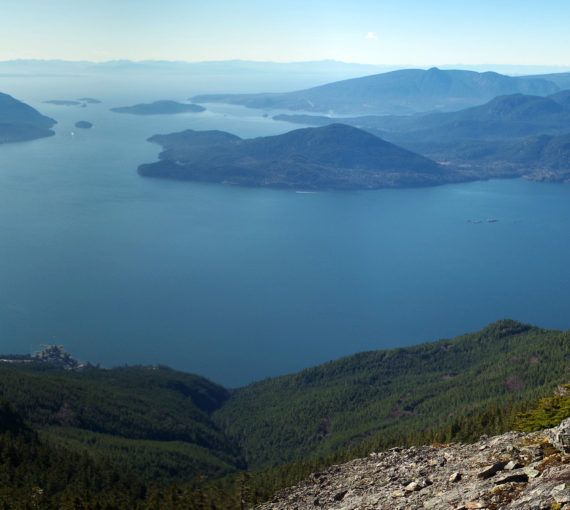
It’s great to have good news.
But optimal marine protection requires protected area networks — not just isolated areas. It must address the way people behave outside protected areas and include Indigenous leadership, knowledge and governance.
We can’t recover endangered species like southern resident killer whales with protected areas alone. We must find ways to reduce underwater noise, limit vessel traffic and speed in key areas, and recover Chinook salmon. Behaviour change beyond protected areas is also essential.
Let’s keep Canada on track to meet its global commitment to protect 30 per cent of its ocean area by 2030. Let’s regulate new marine protected areas to meet minimum standards that don’t allow oil and gas extraction, undersea mining or industrial bottom trawling — from coast to coast to coast.
Canada’s oceans need your support. You can act now!
Finding Solutions features stories of caring people like you who make everything here possible. You can read, share, discuss, take action, join, donate. Whatever you choose, you’re helping protect Earth’s life-support systems. Thank you.
